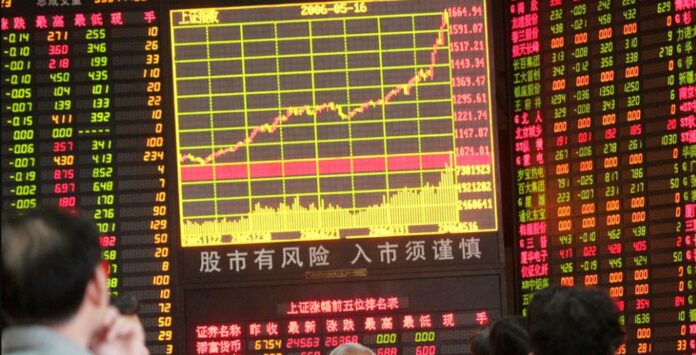Shanghai, April 7, 2025 – Asian stock markets faced a brutal sell-off on Monday, with China’s Shanghai Composite Index crashing 10% at the opening bell, one of the steepest single-day drops in recent history. The turmoil spread across the region, dragging down other major indexes: Singapore’s stock market fell 5.5%, Malaysia’s declined 4%, and Hong Kong’s Hang Seng plummeted 8.8%. The sharp declines have sparked fears of a broader economic slowdown, fueled by escalating U.S.-China trade tensions and domestic challenges in China.
The Shanghai Composite’s nosedive set the tone for a risk-off mood across Asia. Investors, rattled by the prospect of a deepening trade war, dumped stocks en masse. Social media captured the panic, with one user on X posting, “China’s market just tanked 10% at open—Singapore, Malaysia, Hong Kong all getting hammered too. This is ugly.” Another noted, “Hong Kong down 8.8%, Singapore 5.5%, Malaysia 4%—markets are screaming recession vibes.”’
Stock markets today
Hong Kong: -10.7%
Taiwan: -9.6%
Singapore: -7.8%
China: -6.5%
Japan: -6.1%
Malaysia: -4.3%
Australia: -4.2%
Philippines: -4%
India: -3.8%
New Zealand: -3.6%
The root of the chaos lies in U.S. President Donald Trump’s aggressive tariff policies, including a 34% levy on Chinese goods set to take effect April 10. China’s retaliatory measures have only heightened uncertainty, eroding investor confidence. Domestically, China’s sluggish post-pandemic recovery and ongoing property sector woes added fuel to the fire. Across the region, Singapore’s Straits Times Index, Malaysia’s benchmark, and Hong Kong’s Hang Seng felt the ripple effects, with tech and financial stocks hit hardest.
Also Read: US-China Tariff Fight Sparks Massive Selloff in Chinese Markets
Latest Update (10:35 AM IST, April 7, 2025): The Shanghai Composite remains highly volatile, with no signs of recovery as trading continues. Singapore, Malaysia, and Hong Kong markets are still under pressure, with losses holding steady. Trading curbs in China have raised questions about whether further declines will be allowed today. Globally, Japan’s Nikkei dropped 6%, and Europe’s STOXX 50 futures slid 3%, signaling widespread unease.
The economic fallout is already visible. Oil prices have dipped, with Brent crude falling $1.35 to $64.23 a barrel, reflecting fears of reduced global demand. Investors are now eyeing Beijing for signs of a robust stimulus package, but with key economic data not due until mid-March, uncertainty could linger, keeping markets on edge.
Key Points:
Sharp Decline in China’s Stock Market: The Shanghai Composite Index dropped 10% at the opening on April 7, 2025, marking one of the steepest declines in recent times.
Global Impact: The plunge has raised concerns about China’s economic stability, sending shockwaves through global financial markets and contributing to declines in other indexes, such as Japan’s Nikkei (down 6%) and Europe’s STOXX 50 futures (down 3%).
Triggering Factors: The downturn is linked to escalating U.S.-China trade tensions, including new U.S. tariffs of 34% on Chinese goods effective April 10, alongside China’s retaliatory measures, domestic economic slowdown, and a struggling property sector.
Real-Time Reactions: Social media posts on X highlighted the immediate severity of the drop and its potential to signal deeper economic issues.
Broader Economic Effects: Oil prices fell, with Brent crude dropping $1.35 to $64.23 a barrel, reflecting fears of weakening global demand.
Uncertainty Ahead: Investors are awaiting a potential stimulus response from Beijing, but delayed economic data until mid-March could prolong market instability.



